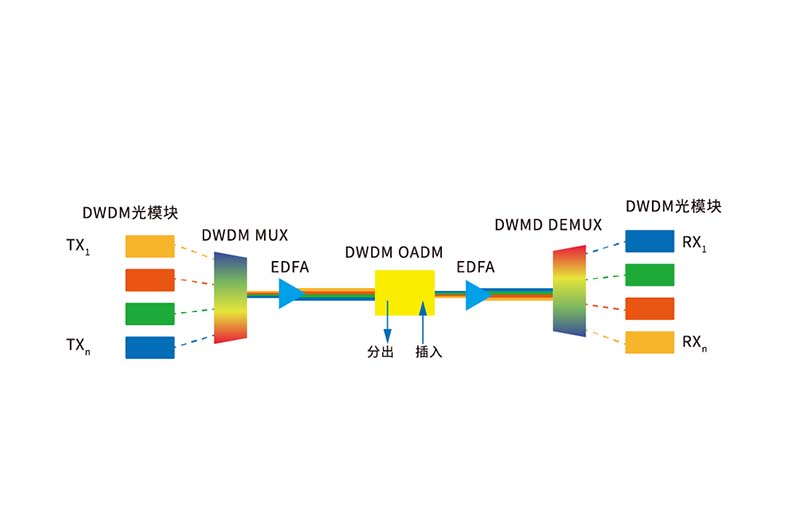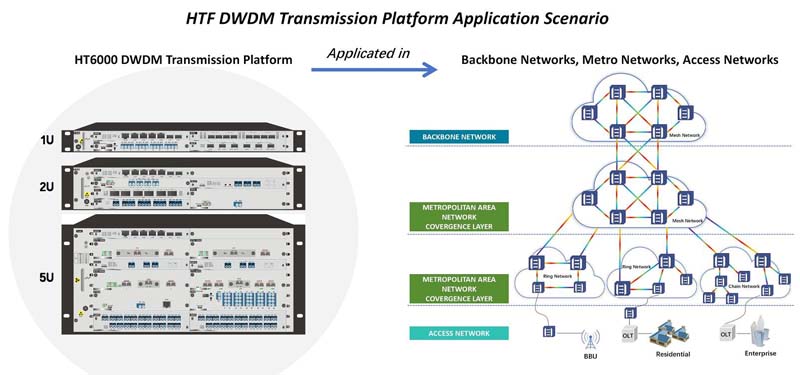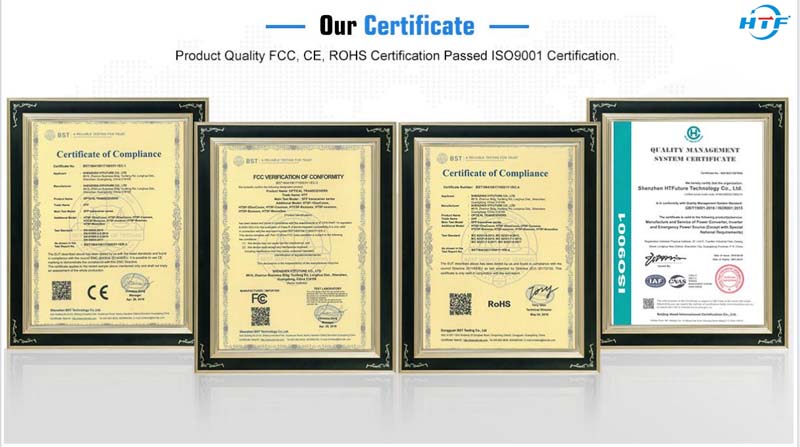Optical communication technology, as the cornerstone of the modern information society, has evolved dramatically from single-wavelength transmission to wavelength division multiplexing (WDM). Coarse Wavelength Division Multiplexing (CWDM) and Dense Wavelength Division Multiplexing (DWDM), as two primary branches of WDM, are widely deployed in Optical Transport Networks (OTN) to support the rapid development of global communication networks.
However, with the explosive growth of cloud computing, 5G, and the Internet of Things (IoT), networks face multifaceted challenges: surging bandwidth demands, cost pressures, and insufficient flexibility. Traditional CWDM systems are limited by short transmission distances and capacity, while DWDM systems are often cost-prohibitive for smaller operators. Against this backdrop, OTN optical transport systems based on a CWDM/DWDM universal platform have emerged as a transformative solution, distinguished by their exceptional performance.
Technical Foundation and Design Principles
The core distinction between CWDM and DWDM lies in wavelength spacing and application scenarios. CWDM employs a wide 20nm wavelength interval, eliminating the need for precise temperature control or expensive high-precision lasers, making it ideal for short-distance, low-cost transmission.
In contrast, DWDM, with its 0.8nm or narrower spacing, can accommodate dozens or even hundreds of wavelengths per fiber, suited for long-distance, high-capacity applications. OTN, as a cornerstone of modern optical communication, leverages its Optical Channel (OCh), Optical Multiplex Section (OMS), and Optical Transmission Section (OTS) layers to enable robust multi-service transport, performance monitoring, and error detection.
The CWDM/DWDM universal platform is designed to bridge these two technologies through a unified hardware architecture and software-defined flexibility. For instance, Reconfigurable Optical Add-Drop Multiplexers (ROADM) serve as a critical component, enabling dynamic wavelength allocation and routing, while Erbium-Doped Fiber Amplifiers (EDFA) ensure signal stability over long distances. This design preserves CWDM’s cost-effectiveness while integrating DWDM’s high performance, offering network operators an ideal solution that balances current needs with future scalability.
Flexibility and Scalability
One of the most prominent advantages of the CWDM/DWDM universal platform is its unparalleled flexibility and scalability. In traditional deployments, CWDM and DWDM typically require separate hardware, whereas the universal platform allows operators to start with CWDM and seamlessly upgrade to DWDM as demand grows.
For example, an initial deployment might leverage CWDM’s 8-18 wavelengths to meet metropolitan area network (MAN) needs, later expanding to 40 or 80 wavelengths with DWDM modules as bandwidth requirements increase. This smooth transition eliminates the high costs of equipment replacement and significantly shortens upgrade cycles.
In practice, this flexibility shines through. A provincial operator might initially deploy CWDM for local data center interconnects, then introduce DWDM via ROADM to extend coverage across a hundreds-kilometer backbone network. This dynamic scalability makes the universal platform an ideal choice for multi-scenario, multi-phase deployments.
Cost-Effectiveness and Resource Optimization
Cost control remains a critical consideration in network deployment. The CWDM/DWDM universal platform reduces total cost of ownership (TCO) through phased investment and resource sharing. CWDM’s low-cost nature—owing to its lack of cooling systems or complex laser tuning—makes it an entry-level choice for small-to-medium networks. The universal platform allows DWDM integration on existing fiber and amplifier infrastructure, avoiding the wasteful duplication of resources.
For instance, deploying a standalone DWDM system might cost millions of dollars upfront, whereas the universal platform enables operators to launch a CWDM network at less than half the budget, with gradual upgrades as needed. This “pay-as-you-grow” model greatly enhances return on investment (ROI). Shared optical infrastructure, such as fiber and EDFA, further optimizes resource use, reducing operational costs by approximately 20%-30%.
High Bandwidth and Transmission Efficiency
Amid surging bandwidth demands, the CWDM/DWDM universal platform delivers exceptional transmission capacity. DWDM’s high-density wavelength design can achieve over 10Tbps per fiber, while CWDM’s wider spacing offers high tolerance for diverse services. OTN’s multi-service encapsulation amplifies this advantage, supporting transparent transport of Ethernet, SDH, and storage networks via ODU/OTU layers.
For example, the platform easily supports single-wavelength rates of 100Gbps or even 400Gbps, meeting the high-bandwidth needs of data center interconnects (DCI) and 5G backhaul. Compared to traditional systems, it boosts bandwidth utilization by about 40%, providing operators with greater service capacity. This efficiency not only elevates network performance but also lays the groundwork for future ultra-high-speed applications.
Long-Distance Transmission and Network Coverage
Long-distance transmission is DWDM’s forte, and the universal platform extends this capability to CWDM scenarios. With EDFA and Dispersion Compensation Modules (DCM), signal transmission distances can expand from CWDM’s tens of kilometers to DWDM’s hundreds or thousands of kilometers. For instance, in G.652 fiber with an attenuation of 0.2dB/km, the platform supports distances exceeding 500 kilometers while maintaining signal integrity.
The integration of ROADM further enhances network coverage. Dynamic wavelength routing allows operators to adjust optical paths based on topology, effortlessly addressing complex backbone network demands. This capability strengthens network robustness and provides a solid foundation for cross-regional connectivity.
Operational Efficiency and Application Value
The platform’s operational advantages are equally compelling. A unified Network Management System (NMS) monitors both CWDM and DWDM performance, significantly reducing complexity. Modular designs, such as pluggable SFP/XFP optical modules, make maintenance and upgrades as simple as assembling building blocks, cutting mean time to repair (MTTR) by about 50%.
In application scenarios, the platform spans enterprise private networks to 5G transport networks. For 5G fronthaul, its low latency and high capacity support real-time data for hundreds of base stations; in DCI, its high bandwidth and flexible networking ensure seamless cloud service expansion. Looking ahead, as 800Gbps rates enter commercial use, the platform’s forward-looking design will continue to lead the industry.
The OTN optical transport system based on a CWDM/DWDM universal platform redefines the boundaries of optical communication with its flexibility, cost-effectiveness, high bandwidth, long-distance transmission, and operational simplicity. Driven by cloud computing, 5G, and IoT, this innovative design not only meets today’s network demands but also paves the way for future technological evolution. Its vast potential shines across applications, from cost-effective MAN deployments to high-capacity backbone coverage.
This field’s remarkable progress owes much to industry leaders like HTF, a globally renowned provider of optical fiber products and WDM solutions. With over 20 years of expertise, HTF’s elite team has crafted the HT6000 system—a compact, high-capacity, cost-effective OTN solution based on the CWDM/DWDM universal platform. Supporting multi-service transparent transport and exceeding 1.6T node capacity, HT6000 excels in national backbones, metropolitan networks, and data center expansions.
Backed by 120+ intellectual property rights and 160+ invention patents, HTF’s technical leadership is unrivaled. Its solutions span multiple countries, driving the industry toward intelligent, efficient horizons. Choosing HTF means partnering with a global pioneer, injecting boundless momentum into the future of optical communication.
Below is an SEO-optimized title, keywords, and description based on the provided content. The title is concise (50 characters), and the description is succinct (140 characters), incorporating key terms for searchability while maintaining relevance and appeal.






